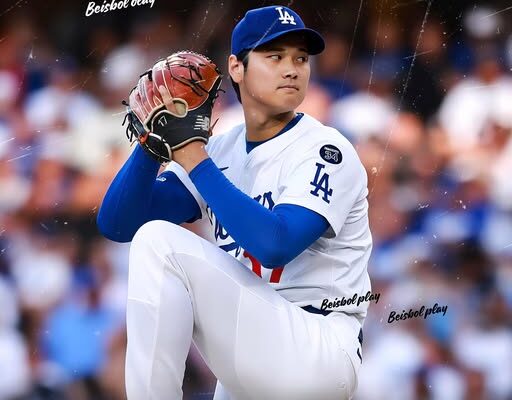The narrative of Shohei Ohtani’s career is a testament to pushing the boundaries of what is possible in baseball. Each chapter of his journey, particularly those intertwined with the formidable challenge of Tommy John surgery, has been marked by a relentless pursuit of greatness. But his most recent return to the mound, after a second such procedure, carved out a new, astonishing piece of history: reaching 100 mph.
It had been 663 days since Ohtani last officially toed the rubber in a major league game. That’s nearly two years, a significant chunk of any player’s prime, especially one who relies on the explosive power of his pitching arm. The first Tommy John surgery, in 2018, was a hurdle that Ohtani cleared with flying colors, returning to establish himself as an undeniable ace alongside his unprecedented hitting prowess. However, the second surgery in September 2023 presented a far more daunting prospect. Doubts, though rarely voiced publicly by those close to him, surely lingered in the background: could he truly recapture his pitching velocity, the very essence of what made him a generational two-way talent?
The road to recovery was meticulously planned and executed. It wasn’t just physical therapy; it was a complex dance of strengthening, retraining, and gradually building up the arm. Every bullpen session was scrutinized, every simulated game analyzed. The Dodgers, having committed an unprecedented sum to secure his services, invested heavily in his rehabilitation, understanding that his two-way ability was the jewel in his crown. The pressure on Ohtani, though unspoken, was immense. Not only was he recovering from a major surgery for the second time, but he was doing so under the bright lights of Los Angeles, as the centerpiece of a World Series contender, and having signed the largest contract in professional sports history.
When the announcement finally came – that Ohtani would make his pitching debut for the Dodgers – the baseball world held its collective breath. This wasn’t a minor league rehab assignment, where players often shake off rust away from the intense glare of the big leagues. This was a straight jump into the fire, a testament to Ohtani’s confidence in his recovery and the Dodgers’ trust in his ability.
The atmosphere at Dodger Stadium on that momentous night was electric. All 53,207 seats were filled, each spectator a witness to what felt like a truly historic event. When Ohtani emerged from the bullpen and walked towards the mound, the roar was deafening. It wasn’t just cheers; it was a release of anticipation, a collective sigh of relief, and an outpouring of admiration for a player who continually defies expectations.
His first pitch of the game wasn’t just a throw; it was a statement. A fastball, unleashed with the familiar, mesmerizing fluidity of his delivery, registered an astonishing 100.2 mph on the radar gun. The collective “ooh” from the crowd was instantaneous, followed by another explosion of cheers. It was a moment that transcended the game itself, a powerful affirmation that the velocity, the raw power that sets him apart, was unequivocally back.
For Ohtani himself, the feeling was a mix of nerves and exhilaration. He later admitted that he was “more nervous than when I’m just a hitter,” a rare glimpse into the internal pressure he faces. He spoke of his “arm moving a little too fast” due to the adrenaline, causing some pitches to miss their mark. This candid admission made the 100 mph reading even more remarkable. To achieve such velocity, even with nerves affecting his command, spoke volumes about the sheer strength and talent he possesses, even after undergoing two major elbow surgeries.
The significance of reaching 100 mph after a second Tommy John surgery cannot be overstated. For many pitchers, even after one such procedure, returning to their peak velocity is a struggle. To do it a second time, particularly for a player who also carries the immense workload of hitting at an elite level, is almost unprecedented. It validated years of painstaking rehabilitation, the expertise of medical teams, and Ohtani’s own unwavering dedication. It sent a resounding message across the league: Shohei Ohtani, the two-way superstar, was still very much capable of dominating on the mound with elite velocity.
While the outing itself was limited to one inning and included an earned run – a perfectly understandable outcome for a first start after such a layoff – the true victory was in the stuff he showcased. The fastball wasn’t just fast; it was lively. He mixed in his other pitches, displaying glimpses of the command that had made him an American League Cy Young contender. The fact that he bypassed minor league rehab, going straight to the bright lights of a major league game, further underscored the confidence in his arm and his recovery.
Making history with the Japanese phenom has become a recurring theme in baseball. From his rookie year, breaking records with his two-way play, to his MVP seasons, and now, his triumphant return to the mound after a second Tommy John surgery, Ohtani consistently pushes the boundaries of what athletes are believed to be capable of. The 100 mph fastball wasn’t just a number; it was a symbol of his resilience, his unparalleled talent, and his unwavering commitment to perfecting his craft on both sides of the ball. It was a moment that etched itself into the annals of baseball history, another incredible testament to the unique and extraordinary career of Shohei Ohtani.



